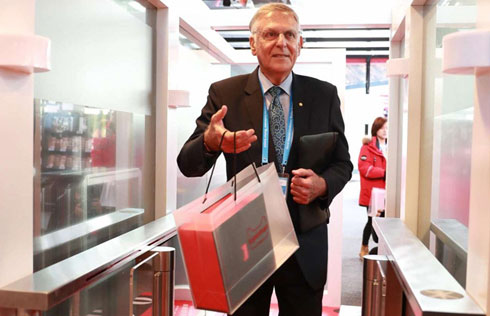Analysis: China's QDII funds boom faces bumpy road ahead
SHANGHAI - China's asset managers are using speedy regulatory approvals to launch overseas investment funds despite flagging demand and lackluster returns for such products, probably leading to a shakeout in an important part of the nation's $350 billion funds industry.
About 20 funds have been launched this year under the Qualified Domestic Institutional Investor (QDII) program, which allows Chinese money to be invested overseas, bringing the total under the scheme to 30 now, triple the number at the end of last year, and some expect even more next year.
The funds, however, are not being launched because investors are clamoring for them. They are being introduced because Beijing has resumed giving the green light for them this year and has stepped up the pace of approvals with a view to getting the Chinese to diversify their assets.
But investors, who lost money in offshore funds during the financial crisis in 2008, are wary of them. Reinforcing that cautious view is the appreciation this year of the Chinese currency, which is discouraging them from taking foreign exchange risks through such investments.
"Investors remain cautious after they were burned by QDII products during the crisis, while the rising yuan also curbs demand," said Zeng Linghua, an analyst at fund consultancy Howbuy.
China launched its QDII scheme in 2006 to channel part of the country's $2 trillion savings abroad, but halted it two years later as global markets tanked during the financial crisis. It resumed the program this year as global markets stabilized.
Twenty Chinese fund houses, including the joint ventures of Credit Suisse, UBS and Deutsche Bank, launched QDII funds this year, thanks to speedy approval by China's securities watchdog.
"Regulators are apparently encouraging investor exposure to overseas assets to diversify risks," said Wu Xianxing, a fund analyst at Haitong Securities Co. "But fundraising is by no means easy after some investors were badly burned by QDII funds during the crisis."
New QDII funds launched this year raised 600 million yuan ($90 million) each on average, according to fund consultancy Z-Ben Advisors, in sharp contrast to the pre-crisis level of 30 billion yuan, reflecting slumping demand.
Moreover, massive redemptions that came immediately after the fund launches suggest that a large proportion of the fundraising comes from short-term institutional money lending temporary support to those QDII products, Z-Ben Advisors said.
For example, the UBS SDIC Global Emerging Market Fund saw its assets under management dive to 71.3 million yuan in September after raising 443.2 million yuan in June.
And the Bosera Greater China APAC Elite Fund, which raised 554.7 million yuan in July, saw its assets plummet to just 113.4 million yuan at the end of October. A steady appreciation of the Chinese yuan is hurting the QDII funds as investors prefer to park their money at home to take advantage of the currency's rise, Haitong's Wu said.
The yuan has risen 2.5 percent since China scrapped a nearly two-year peg to the dollar in mid-June, and analysts expect it to rise around 5 percent annually over the next few years. That is forcing China asset managers to launch their funds now before demand slows even further, according to Z-Ben Advisors. Some are offering more creative products to lure investors.
Reuters
(China Daily 12/20/2010 page14)








